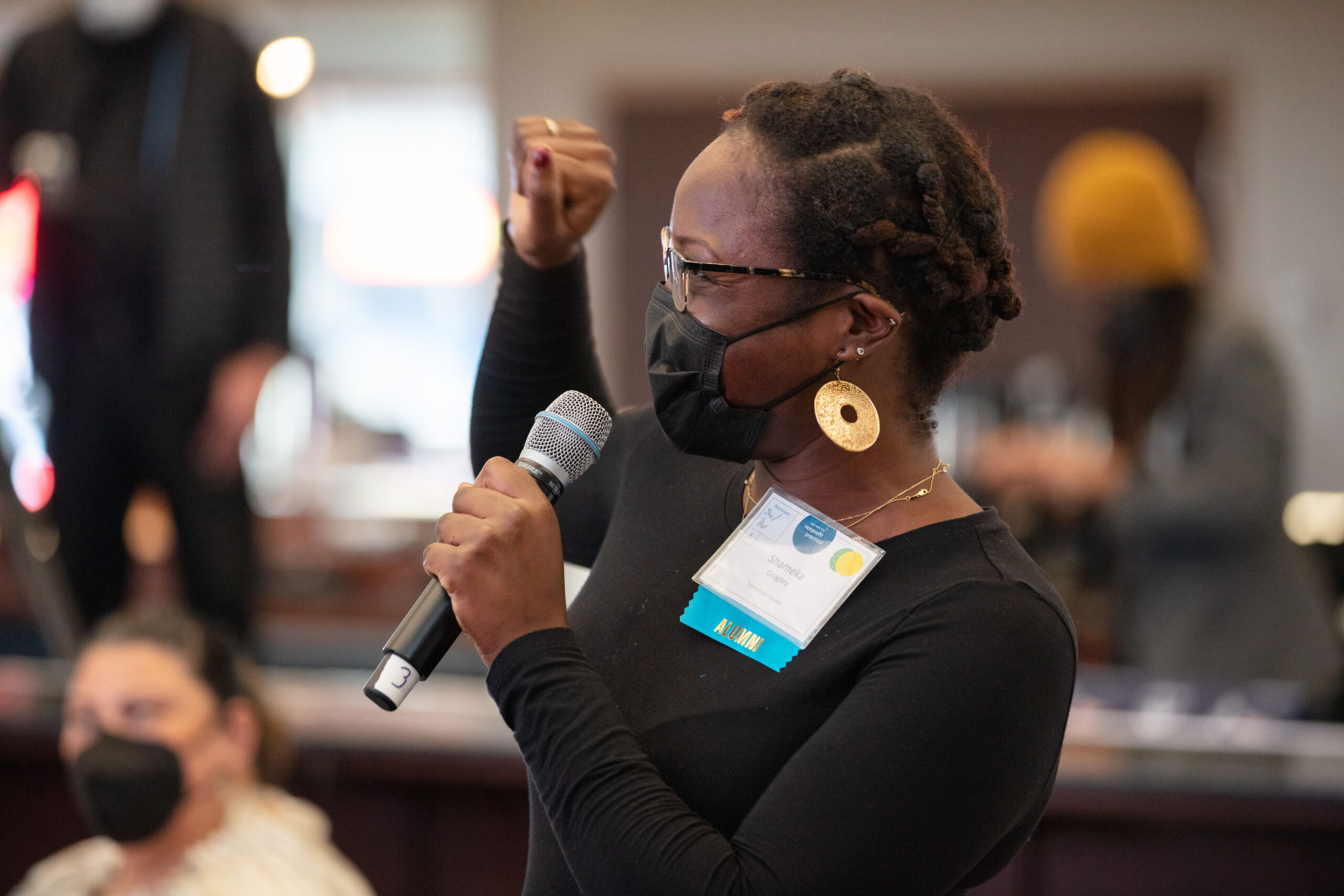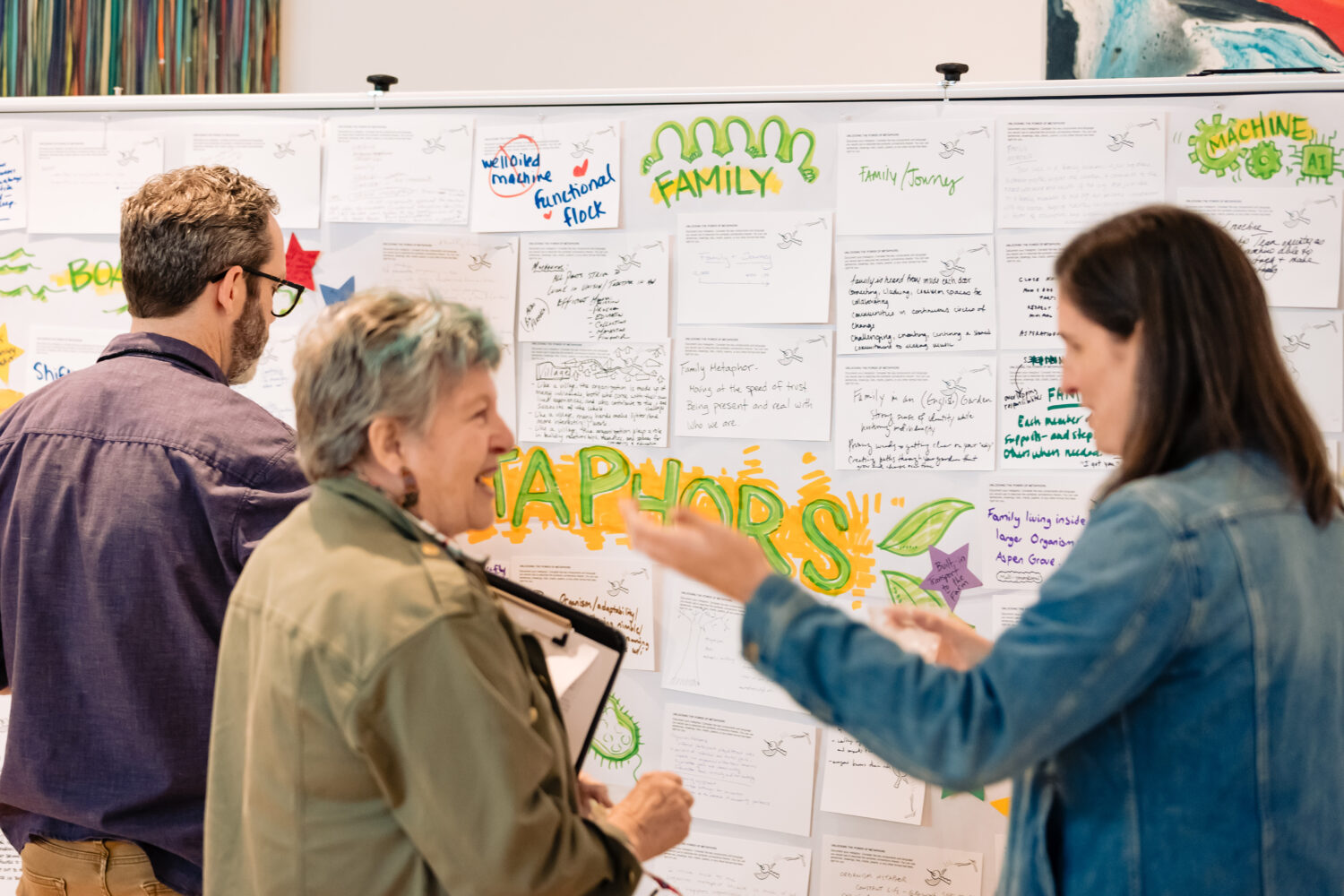As the nation grapples with “the great resignation” across a range of job industries since the start of the pandemic, employment challenges extend to the nonprofit sector as well. Nonprofits are experiencing high rates of burnout and turnover, and many are struggling to fill vacancies. At the same time, the work of nonprofits continues to be lifesaving for communities that lacked adequate resources before the pandemic and have become more vulnerable since. Supporting nonprofit leadership at all levels is as important as it has ever been.
Notions of leadership are evolving, particularly as the nonprofit and philanthropic sector considers what it takes for individuals, organizations, and communities to drive systemic change in pursuit of racial equity and more effective outcomes for all. Leadership is not static, and it doesn’t sit with one person. Instead, leadership is about building collective power to influence and change organizations and systems to operate in just and liberating ways that enable all individuals to thrive. Tweet This Under this definition, anyone can be a leader, and leadership is expressed through the actions people take.
With support from the Barr Foundation, Community Wealth Partners spoke to Black, Indigenous and other people of color (BIPOC) nonprofit leaders and leadership development program providers to help Barr understand how they and other foundations can support BIPOC leadership in the context of racial equity. Promoting, retaining, and supporting BIPOC leadership within nonprofits is critical for driving systemic change. From these interviews, we heard five actions that can have the biggest impact. Funders can consider how they might tailor and incorporate these into their own approaches to supporting leadership.
1. Support leaders to change systems.
While traditional leadership development programs focus primarily on individual skill building, many programs that center racial equity also focus on topics that are important for driving change within racialized systems, such as deepening self-awareness, understanding ways to shift and leverage power, and opportunities for connection and collaboration across organizations and movements. This work is emotionally draining, so leaders also need support for their well-being (see more on this below).
The Institute for Nonprofit Practice is launching its Black Leadership Institute to connect, inspire, and uplift Black leaders who are working on systemic issues that have significant outcome disparities for Black people, such as incarceration and recidivism, health and health care, environmental justice, poverty, and education. Programming will focus on critical topics that enable Black leaders to build power and greater influence in their communities, including resources to expand leadership practices, deepen self-awareness, develop relationships and networks, and cultivate joy and renewal.
2. Center relationships.
Relationships are the cornerstone to building collective power. Leaders need trusting relationships with colleagues and peers to access learning, support, and create opportunities for partnership. They also need strong relationships within the power structures so they can leverage those relationships to drive systemic change. Funders can support relationship building by leveraging their networks and convening power to connect leaders to peers and allies they may not yet know. Interviewees we spoke to lifted up the value of leadership programs that create space for relationship building. For example, when program officers at the Annie E. Casey Foundation hosted the Baltimore Leaders Program for leaders under thirty, they facilitated connections to people in their networks, helping leaders secure additional contacts and sources of funding.
Cohorts can be a way to help leaders build relationships with colleagues and peers. TSNE launched its Executive Directors of Color Capacity Support Pilot to provide BIPOC leaders with adaptive, flexible, and integrated support through a range of offerings, including peer support and networking, participatory training, facilitated discussion, one-on-one coaching, project-oriented technical assistance, and access to tools and resources. TSNE recently completed a pilot cohort with 22 BIPOC leaders from the Boston region and is learning from evaluation results to inform the design of future cohorts.
3. Prioritize BIPOC leaders’ well-being.
Leading and navigating organizations that have been built within a white dominant model while also working to dismantle those structures and systems is complex, emotional work. BIPOC leaders need offerings that create safe space and prioritize their well-being. This could include fellowship programs, retreats, sabbaticals, or supporting changes in job roles and structures that allow leaders to create the space they need to be able to work in ways that feel sustainable and tend to their well-being at work.
“BIPOC leaders are serving BIPOC communities that have been historically marginalized. They may identify with those experiences in the community and the racial trauma that exists,” said Vernée Wilkinson of School Facts Boston in an interview. “As I’m advocating for students and families I serve, I simultaneously need to tap into my own trauma from similar experiences. Doing work together to process and heal is important.”
One nonprofit that is prioritizing BIPOC leaders’ well-being and sustainable leadership is New Seneca Village, whose mission is to provide cis, trans, and non-binary Black, Indigenous, and women of color social justice leaders with residencies offering time and space, access to nature, restorative practices and community centered around collective visioning for a just future.
4. Give multiyear, unrestricted support.
Unrestricted support is critical capital that allows nonprofits’ ability to invest in innovation, learning, growth, and operations. It also can support an organizations’ ability to attract and retain staff. Interviewees shared that a key barrier to being able to attract, retain, and develop talent is lack of flexible resources to use for compensation, hiring, and talent development. According to the Race to Lead report by Building Movement Project, BIPOC leaders say increased philanthropic funding to BIPOC-led organizations would help organizations be able to attract and retain more racially diverse leadership.
General operating support is a key component of the Barr Foundation’s Powering Cultural Futures initiative, which invests in 15 Massachusetts arts organizations playing vital roles in BIPOC communities. Grantees receive six years of unrestricted support along with technical assistance, network development, and support building capacity to achieve organizational priorities. The program’s goal is to support these organizations’ effectiveness and resilience so that they can contribute to an equitable arts sector in Massachusetts that uplifts cultural expression in BIPOC communities.
5. Invest in early to mid-career stage staff.
Increasingly, leadership development approaches are looking beyond the executive director role and taking collective approaches to strengthen teams, support staff retention, and build a stronger pipeline of talent. Investments at early to mid-career stages, and focused on BIPOC leaders, are needed to maintain and expand the pipeline of talent in the sector who are ready to continue transformational work. The Center for Effective Philanthropy’s 2018 Strengthening Grantees survey found that nonprofit leaders cited staffing as one of the top challenges organizations face (second only to fundraising). As Rusty Stahl of Fund the People explained in the report, “Most nonprofits do not have the capital or the incentives to invest in their people. Most funders focus on the financial and program strengths and needs of grantees, not on the staffing strengths and needs. This dearth of investment can produce an unjust workplace, weak recruitment, poor work conditions, burnout and turnover, and unhealthy executive transitions.”
Our interviews found that those early in their career cite low pay as the greatest barrier for nonprofit employment. “When the lowest paid staff is earning one-third the amount of the highest-paid staff, that makes it hard for early career staff to feel like they are being valued as leaders,” said Kim Szeto of New England Foundation for the Arts.
Mid-career BIPOC staff named the importance of an equitable and inclusive culture for staff development and retention. One cultural aspect that mid-career employees cited as being discouraging was a focus on perfectionism as a barrier to advancement — something that is common in white dominant culture. “If the culture doesn’t embrace and support mistakes and failures, it will make it hard to cultivate good leadership and will create turnover,” said Melanie Gárate of Mystic River Watershed Association. “Leaders should model saying ‘I made a mistake. It’s ok to fail.’ This doesn’t happen very often.”
Getting Clear on What Matters Most
Recognizing that funders may not be able to incorporate all five recommendations into their leadership development support, here are some suggestions for how you might determine what to prioritize in your approach:
- Be clear about who you are investing in and the change you want to see. When thinking about who, consider racial identity, career stage, etc. Also consider, what systemic changes are you hoping to see?
- Get input from your grantees. What would make the biggest difference to them? Start there.
- If the resources you have available are limited, consider giving unrestricted support instead of developing a leadership development program. Grantees we interviewed said a key challenge to being able to develop and retain leaders is lack of resources for competitive pay and professional development. Modest investments in leadership development from funders will have limited impact if this challenge is not addressed. As Caroline Saunders and Lucia Priselac of Grist shared, “In the context we’ve been working in, which has been high burn out and high turnover, there is no question having better pay has been huge to becoming a thriving community of people.”
Regardless of what steps you take as a funder, prioritizing talent development and retention is critical — perhaps more so now than ever. Nonprofit leaders are experiencing stress, burnout and exhaustion. Recent research from Building Movement Project found that about half of the leaders they surveyed were considering departing their jobs or actively preparing to leave — and this data was collected before the pandemic started. To move the sector toward racial equity and justice, funders should sustain healthy leadership development within nonprofits that builds collective power to shift organizations and systems toward justice and liberation.
This article was originally published on March 31, 2022 by the Center for Effective Philanthropy.
Barr has a deep history of and commitment to investing in leadership that centers diversity, equity and inclusion. As Barr redoubled its focus on racial equity across all of our programs, we commissioned Community Wealth Partners to conduct research to gather the latest knowledge, insights, practices, and questions aboutadvancing leadership in the context of racial equity. Specifically, we wanted to understand, “How should we be thinking differently about leadership development in the context of racial equity?” Based on the experience of our programs, combined with the insights from the research, we have been considering new approaches to Investing in Leadership for Racial Equity and look forward to continuing to learn with and from our grantees and partners in the coming months and years.





